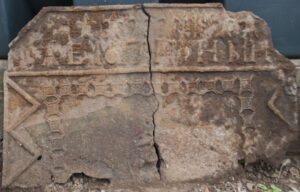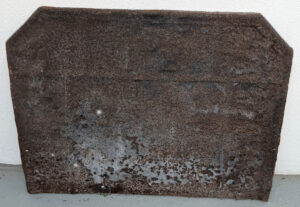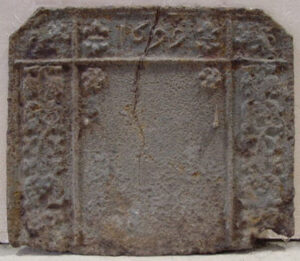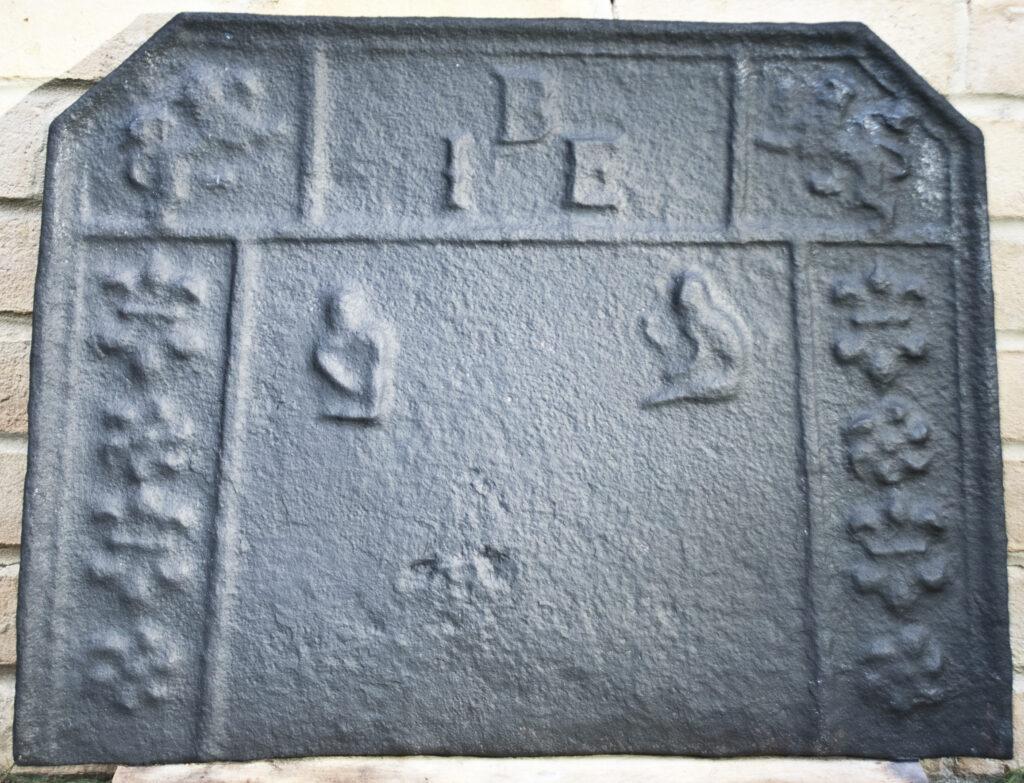The Forest of Dean and its immediate environs were a major source of firebacks, second only to the Weald. However, the first blast furnaces from which firebacks could be cast were not built there until the last decade of the 1500s, a century after the Weald.
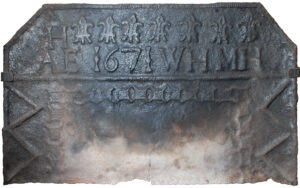
This perusal of some of the products of these works begins, curiously, in a cottage in west Sussex where I recorded the fireback on the left. Apart from initials, which one assumes, were of four members of the same family, perhaps a husband and wife and two children, there are two distinctive stamps – a crude fleur-de-lys, and a square within a cross – which have been employed liberally as decoration. David Bick, an earlier researcher into firebacks in Dean, had noted the presence of a casting bearing the same initials at the site of the former Elmbridge or Oxenhall Furnace at Newent. I made a point of calling there in 2017 and was helped by the staff of the undertakers who occupy the site to locate and recover the back shown on the right that had been partially buried close to their premises. Despite the poor state in which I found it, and which I was unable to remedy, beyond a superficial brushing, in the time I had available, it is quite plainly almost the same as the casting in Sussex, apart from the different alignment of the squared crosses on the left hand side and the spacing of the initials relative to the crosses below. Also of note is the raised pattern discernible on the chevrons on the left, which can also be made out on the horizontal and vertical fillets (to see them more clearly click on the image for a larger version). It would seem likely that this had been a rejected casting, the one in Sussex being of an acceptable standard.
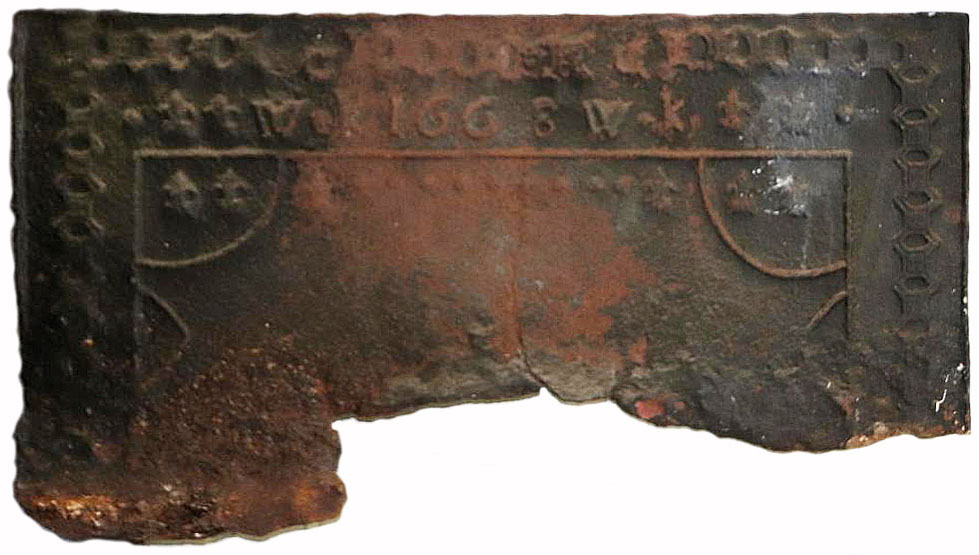
As with firebacks I have recorded in the Weald, the distinctive forms of certain stamps are a useful source of evidence for the production of backs at the same ironworks. The Newent and Sussex backs, above, bear the date 1671 and the same squared crosses can be seen on this somewhat distressed fireback of 1668 that was sold at auction in Gloucester in 2019. On this back the arrangement of vertical and horizontal lines should be noted, as well as the raised arcs at their corners.
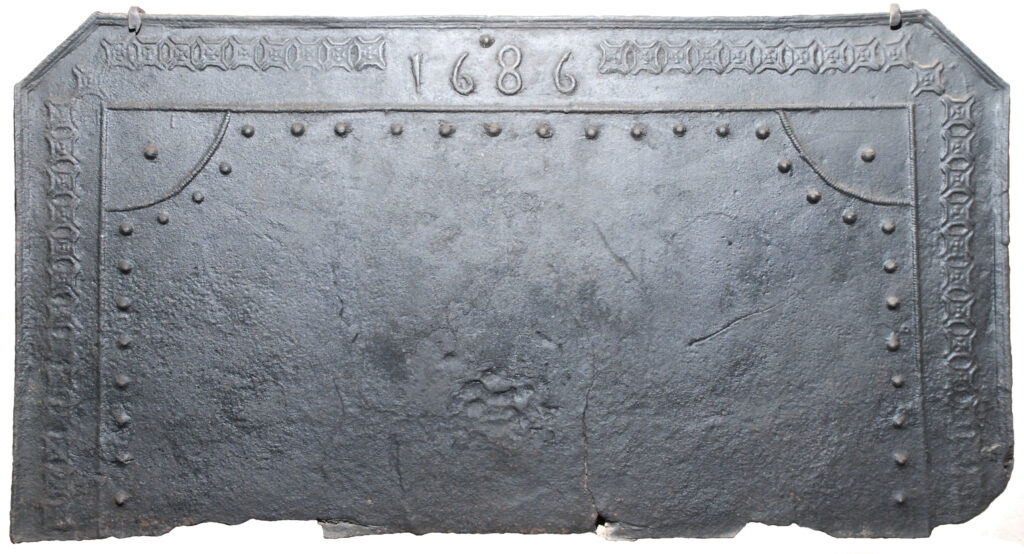
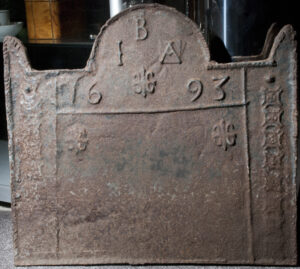
I encountered squared crosses again on this fireback of 1686 in the Ashmolean Museum in Broadway, Worcestershire, where I gave a lecture on firebacks in 2015. However, there seem to be small differences in detail between these crosses and the Newent ones. Nevertheless the arrangement of the vertical lines and the arcs lends weight to the back having the same source. The same crosses seen on the Broadway back are on this 1693 back that was auctioned at Binegar in Somerset in 2019, and on which are three particular double fleurs-de-lys, which also decorate the impressive 1688 fireback, below, which is in the George Hotel at Cranbrook in Kent.
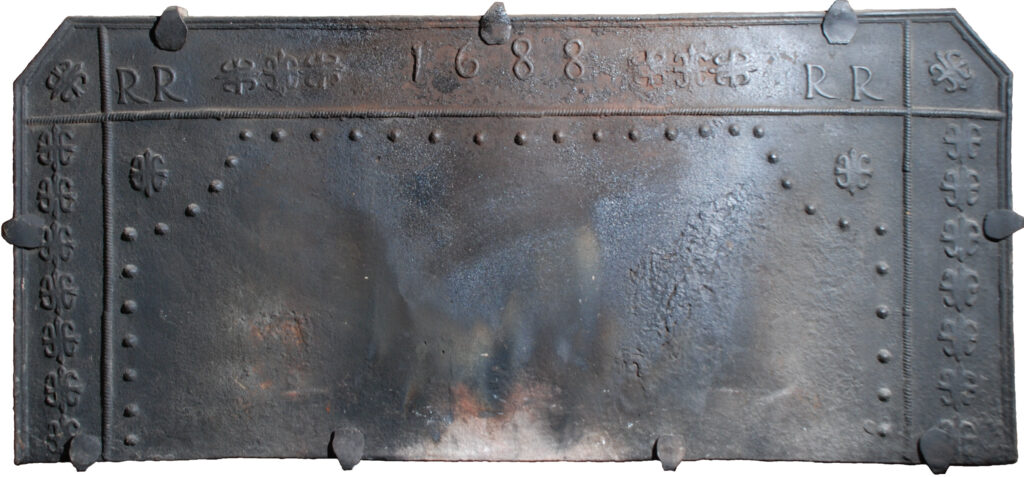
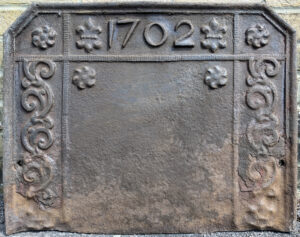
The divided format of that back is strikingly similar to a series about which I have previously written, namely those identified by the initials IB. None of the castings in that series is decorated with any of the stamps I have already mentioned but stylistically they are very similar to the Cranbrook back. Also, on a recently acquired back from the IB series, dated 1702, the fillets that divide up the surface relief bear the same, or very similar, raised pattern seen on the back I illustrated from Newent, made 30 years earlier (click on the image for a larger version).
There are other firebacks with other stamps that can also be associated with those I have illustrated but which are in too poor a condition to show. They also point to a common source, whether at Newent or at another furnace in the area around the Forest of Dean. Follow THIS LINK to see some of them.
